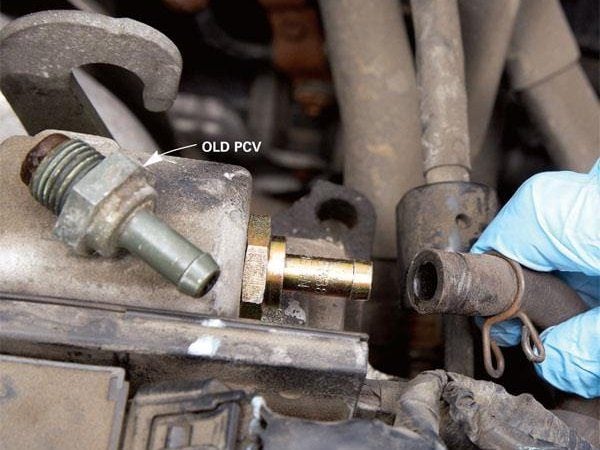How to Check for a Bad PCV Valve
Perform the world’s easiest diagnostic test: Shake your PCV valve to make sure it’s working. It only takes five minutes to replace a bad one.

This sounds complex, but it’s not. Pull out your PCV valve every other oil change or when doing maintenance on your car. In most cases, you’ll find the valve on the top of the engine, connected to a vacuum hose. Some late-model cars don’t have PCV valves, so don’t beat yourself up trying to find it. Slide the vacuum hose off the valve and unscrew the valve. Then perform the world’s easiest diagnostic test: Shake it. If it makes a metallic clicking sound, it’s good. If it doesn’t make noise or sounds mushy, replace it. But don’t replace it on appearance alone – all used PCV valves look dirty.
Need help locating your PCV valve? Buy a short subscription to an online factory service manual (oem1stop.com); rates start at about $10 a day. Non-factory manuals are cheaper, but they’re skimpy on instructions and diagrams for these kinds of repairs.
PCV Valve Replacement Instructions:
Pull off the hose and remove the old valve. If it’s bad, screw in a replacement and replace the hose.
Required Tools and Materials for This Project:
• Adjustable wrench
• New PCV valve
Check out more do-it-yourself car maintenance tips!
Explore Reader’s Digest Cars.



